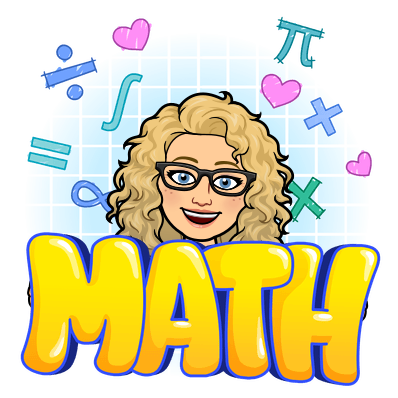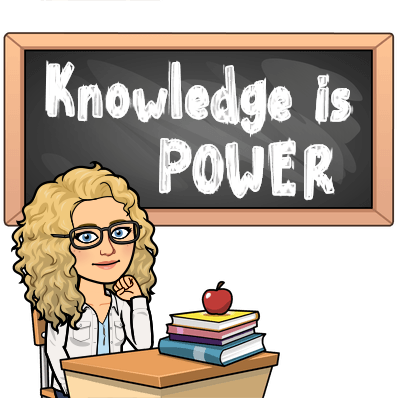Mathematics

In my mathematics instruction I utilize a variety of instructional approaches that will include whole group instruction, small group instruction, partner learning, and independent learning. I also incorporate a variety of fun learning games to enhance instruction and provide additional practice and enrichment for students.
Our curriculum has a spiraling effect. What that means is that each concept is taught or introduced during a unit during the year, but with our program each concept is also revisited several times throughout the year.
Students can access the EM site by using Clever. Click this link to access. Clever Login
Need additional help with the individual lessons? Here is a link that may be helpful.
Math Journal and Homelink Extra Help Youtube Videos
Here is a brief overview of some concepts and skills that will be taught in 4th Grade. They are divided by strands from the Core Curriculum Content Standards of the State of New Jersey.

Number and Numeration:
| Program Goal | Content Thread | Grade-Level Goal |
|---|---|---|
| Understand the Meanings, Uses, and Representations of Numbers | Place value and notation | Read and write whole numbers up to 1,000,000,000 and decimals through thousandths; identify places in such numbers and the values of the digits in those places; translate between whole numbers and decimals represented in words and in base-10 notation. |
| Meanings and uses of fractions | Read, write, and model fractions; solve problems involving fractional parts of a region or a collection; describe and explain strategies used; given a fractional part of a region or a collection, identify the unit whole. | |
| Number theory | Find multiples of whole numbers less than 10; identify prime and composite numbers; find whole-number factors of numbers. | |
| Understand Equivalent Names for Numbers | Equivalent names for whole numbers | Use numerical expressions involving one or more of the basic four arithmetic operations and grouping symbols to give equivalent names for whole numbers. |
| Equivalent names for fractions, decimals, and percents | Use numerical expressions to find and represent equivalent names for fractions and decimals; use and explain a multiplication rule to find equivalent fractions; rename fourths, fifths, tenths, and hundredths as decimals and percents. | |
| Understand Common Numerical Relations | Comparing and ordering numbers | Compare and order whole numbers up to 1,000,000,000 and decimals through thousandths; compare and order integers between -100 and 0; use area models, benchmark fractions, and analyses of numerators and denominators to compare and order fractions. |
Operations and Computation
| Program Goal | Content Thread | Grade-Level Goal |
|---|---|---|
| Compute Accurately | Addition and subtraction facts | Demonstrate automaticity with addition and subtraction fact extensions. |
| Addition and subtraction procedures | Use manipulatives, mental arithmetic, paper-and pencil algorithms and models, and calculators to solve problems involving the addition and subtraction of whole numbers and decimals through hundredths; describe the strategies used and explain how they work. | |
| Multiplication and division facts | Demonstrate automaticity with multiplication facts through 10*10 and proficiency with related division facts; use basic facts to compute fact extensions such as 30*60. | |
| Multiplication and division procedures | Use manipulatives, mental arithmetic, paper-and-pencil algorithms and models, and calculators to solve problems involving the multiplication of multidigit whole numbers by 2-digit whole numbers and the division of multidigit whole numbers by 1-digit whole numbers; describe the strategies used and explain how they work. | |
| Procedures for addition and subtraction of fractions | Use manipulatives, mental arithmetic, and calculators to solve problems involving the addition and subtraction of fractions and mixed numbers; describe the strategies used. | |
| Make Reasonable Estimates | Computational estimation | Make reasonable estimates for whole number and decimal addition and subtraction problems and whole number multiplication and division problems; explain how the estimates were obtained. |
| Understand Meanings of Operations | Models for the operations | Use repeated addition, skip counting, arrays, area, and scaling to model multiplication and division. |
Data and Chance
| Program Goal | Content Thread | Grade-Level Goal |
|---|---|---|
| Select and Create Appropriate Graphical Representations of Collected or Given Data | Data collection and representation | Collect and organize data or use given data to create charts, tables, graphs, and line plots. |
| Analyze and Interpret Data | Data analysis | Use the maximum, minimum, range, median, mode, and graphs to ask and answer questions, draw conclusions, and make predictions. |
| Understand and Apply Basic Concepts of Probability | Qualitative probability | Describe events using certain, very likely, likely, unlikely, very unlikely, impossible and other basic probability terms; use more likely, equally likely, same chance, 50-50, less likely, and other basic probability terms to compare events; explain the choice of language. |
| Quantitative probability | Predict the outcomes of experiments and test the predictions using manipulatives; summarize the results and use them to predict future events; express the probability of an event as a fractionTree diagrams |
Measurement and Reference Frames
| Program Goal | Content Thread | Grade-Level Goal |
|---|---|---|
| Understand the Systems and Processes of Measurement; Use Appropriate Techniques, Tools, Units, and Formulas in Making Measurements | Length, weight, and angles | Estimate length with and without tools; measure length to the nearest 1/4 inch and 1/2 centimeter; use tools to measure and draw angles; estimate the size of angles without tools. |
| Area, perimeter, volume, and capacity | Describe and use strategies to measure the perimeter and area of polygons, to estimate the area of irregular shapes, and to find the volume of rectangular prisms. | |
| Units and systems of measurement | Describe relationships among U.S. customary units of measure and among metric units of measure. | |
| Use and Understand Reference Frames | Coordinate systems | Use ordered pairs of numbers to name, locate, and plot points in the first quadrant of a coordinate grid.Students will learn a variety of problem solving strategies such as looking for key words, drawing a picture, using a calculator, estimating, or using different paper-pencil algorithms |
| Program Goal | Content Thread | Grade-Level Goal |
|---|---|---|
| Investigate Characteristics and Properties of Two- and Three-Dimensional Geometric Shapes | Lines and angles | Identify, draw, and describe points, intersecting and parallel line segments and lines, rays, and right, acute, and obtuse angles. |
| Plane and solid figures | Describe, compare, and classify plane and solid figures, including polygons, circles, spheres, cylinders, rectangular prisms, cones, cubes, and pyramids, using appropriate geometric terms including vertex, base, face, edge, and congruent. | |
| Apply Transformations and Symmetry in Geometric Situations | Transformations and symmetry | Identify, describe, and sketch examples of reflections; identify and describe examples of translations and rotations. |
Patterns, Functions, and Algebra
| Program Goal | Content Thread | Grade-Level Goal |
|---|---|---|
| Understand Patterns and Functions | Patterns and functions | Extend, describe, and create numeric patterns; describe rules for patterns and use them to solve problems; use words and symbols to describe and write rules for functions that involve the four basic arithmetic operations and use those rules to solve problems. |
| Use Algebraic Notation to Represent and Analyze Situations and Structures | Algebraic notation and solving number sentences | Use conventional notation to write expressions and number sentences using the four basic arithmetic operations; determine whether number sentences are true or false; solve open sentences and explain the solutions; write expressions and number sentences to model number stories. |
| Order of operations | Evaluate numeric expressions containing grouping symbols; insert grouping symbols to make number sentences true. | |
| Properties of the arithmetic operations | Describe and apply the Distributive Property of Multiplication over Addition. |
